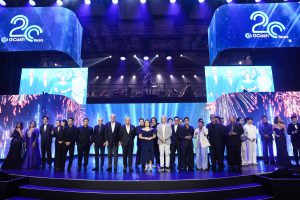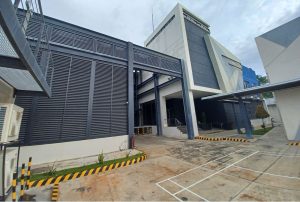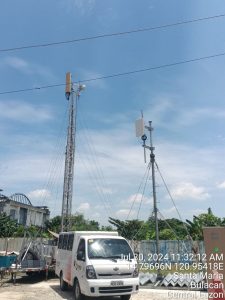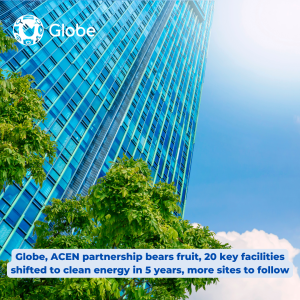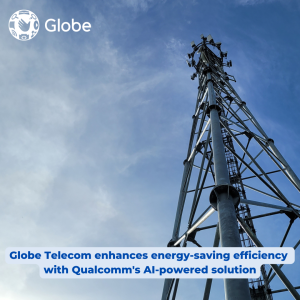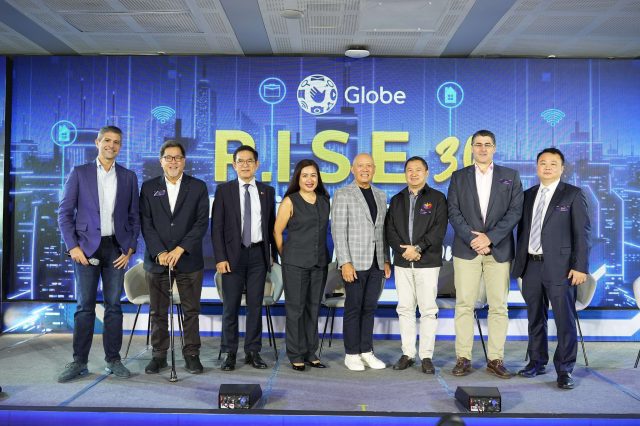
Government and private sector partners recently came together in a united front to push for inclusive connectivity, as disparity in access continues to afflict many parts of the country, depriving communities of life-enabling technology.
At Globe’s RISE 3.0 event, representatives from the government, technology and real property industries gathered to tackle trends and developments in policies and tech that impact the way Filipinos experience connectivity.
At the center of discussions is how to expand connectivity and improve customer experience given current barriers.

“Let’s all work together to provide equitable connectivity across the country. The telcos cannot do it alone. We are very large facilities but we have over a hundred million people to connect. The government is doing its share, alleviating requirements and permits and giving incentives. We need members of the private sector who are very much interested in furthering the connectivity agenda. It’s only by working together that we can come up to speed with other countries out there that are truly digital,” said Ernest Cu, Globe Group President and CEO.

“Our goal is to cover the entire country for the Philippines to be really called a digital nation and to be able to say that we can provide the kind of services that are streamlined and digitalized in order to fight corruption in the process,” said Anti-Red Tape Authority Secretary Ernesto Perez.
In a report released in 2023, the Philippine Statistics Authority said just over half or 56.1% of Filipino households can access the internet at home. Statistics from a 2020 study of Thinking Machines and the Asian Development Bank, meanwhile, revealed the gulf in internet speeds between urban and rural areas in the Philippines, with the country’s five wealthiest cities having average speeds of 25.65 Mbps, while the five poorest cities had a significantly slower 4.62 Mbps.
A Philippine Institute for Development Studies paper in 2021, meanwhile, showed that access to fiber optic cable was available in only 29% of barangays across the country, with rural barangays making up a meager 12% of these fiber-connected areas.
Devid Gubiani, President and CEO of PhilTower Consortium, pointed out that the Philippines lagged behind its Asian neighbors in terms of tower-user ratio, which greatly affects user experience. With 17,850 cell sites serving 76 million internet users in the Philippines, 4,258 people share connectivity from a single tower. In comparison, the ratio is one tower to 1,554 people in Indonesia, one to 711 in Vietnam, and one to 408 in China.
“We need more hands on deck. Shared infrastructure is key to providing ubiquitous connectivity. We can potentially enable much better service for more FIlipinos but also a much broader coverage. It’s about depth and it’s about coverage,” Gubiani said.

Undersecretary Jeff Dy of the Department of Information and Communications Technology said the government is already looking at crafting policy on common towers and common poles. He said the department is also studying a “Dig Once” Policy, where all concerned utility services must be informed of an infrastructure project that requires a dig so that all necessary conduits and connections will be completed in one go. This minimizes street-level disruption that aggravates traffic.
“Connectivity is the lifeblood of a digital nation. Let us forge collaboration that allows us to build a digitally empowered Philippines that is inclusive, aligned with the Sustainable Development Goals, as directed by DICT Secretary Ivan Uy under the vision of our President Ferdinand “Bongbong” Marcos Jr. No one gets left behind,” he said.
Mitch Ora, Site Lifecycle Management Services Vice President at Globe, said the Philippines needs an estimated 40,000 more towers to get to the ideal tower-user ratio.
She said Globe continues to pursue infrastructure models that will advance enhanced and more inclusive connectivity. These include tower-sharing, which Globe already undertakes with partners; fiberco which will allow quick upgrades of old copper wires into fiber in homes and buildings; and the in-building neutral host sharing model, which allows the sharing of indoor antennas.
“If connectivity improves, consumers will enjoy multiple benefits, including in the worst of circumstances,” said Bill Luz, Chairman of Liveable Cities Philippines and Chief Resilience Officer of the Philippine Disaster Resilience Foundation (PDRF).
“There are going to be many, many benefits for the consumer. Let me refer to a very extreme case: a disaster. At PDRF, whenever there’s a disaster, in the immediate call out for help, it’s always connectivity, power and water, the three utilities that people look for. And you can already see that’s the way people treat it. They need it,” he said.
To learn more about Globe’s initiatives on connectivity, please visit www.globe.com.ph.

